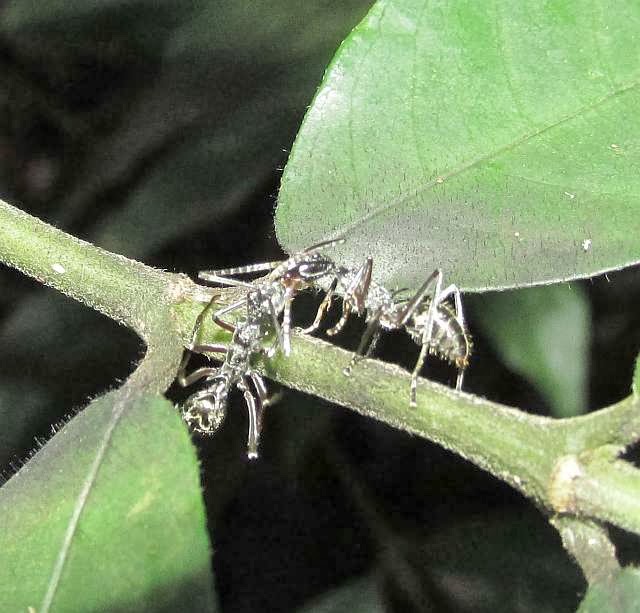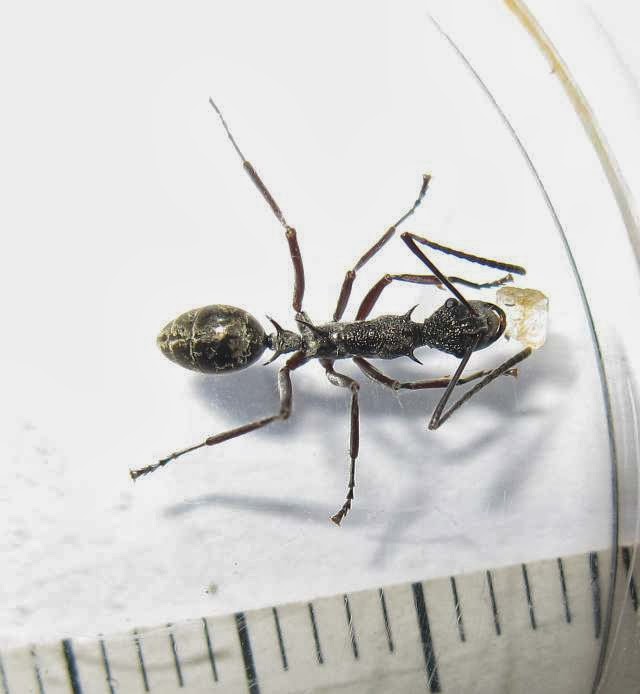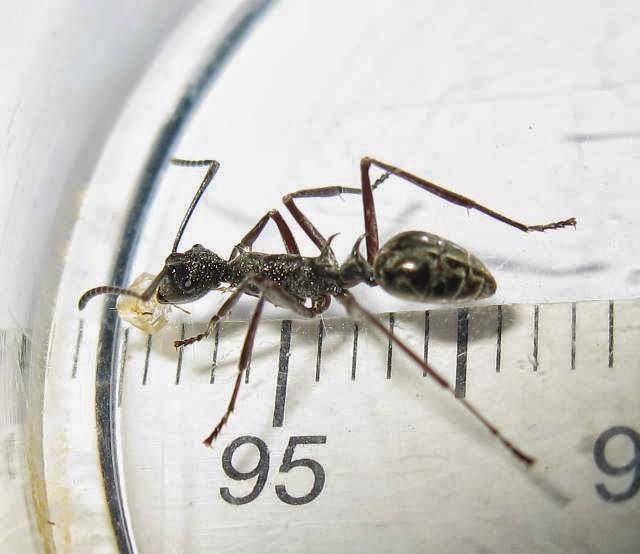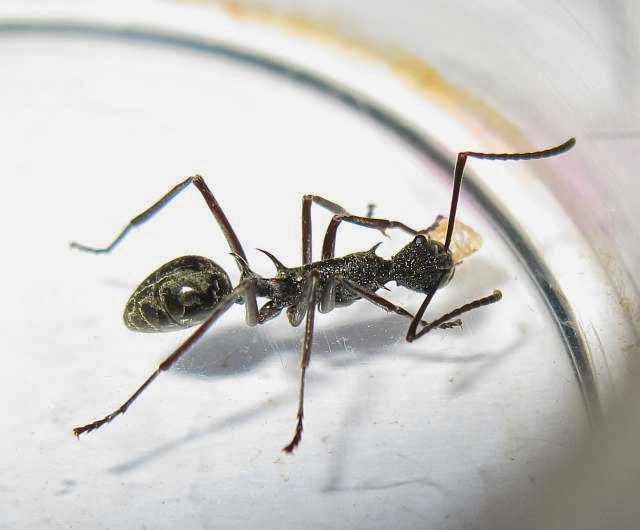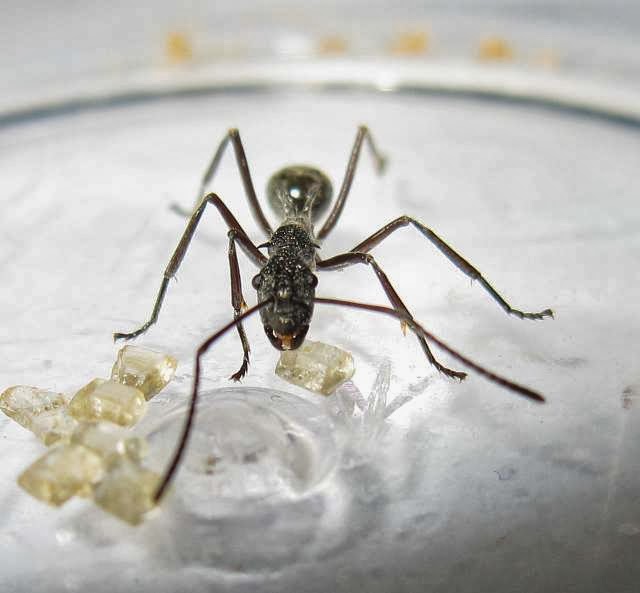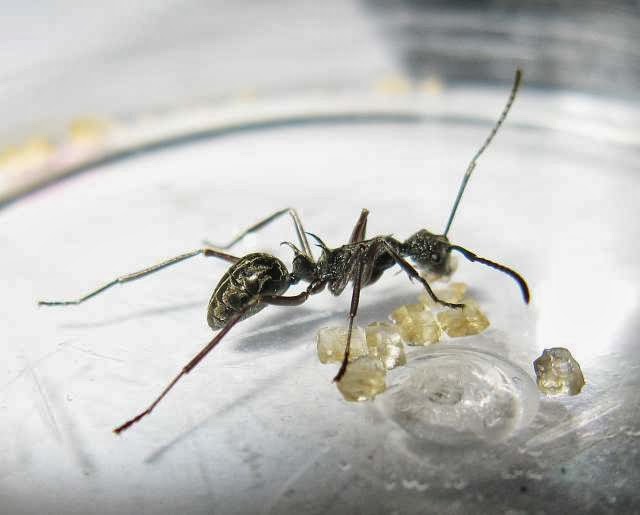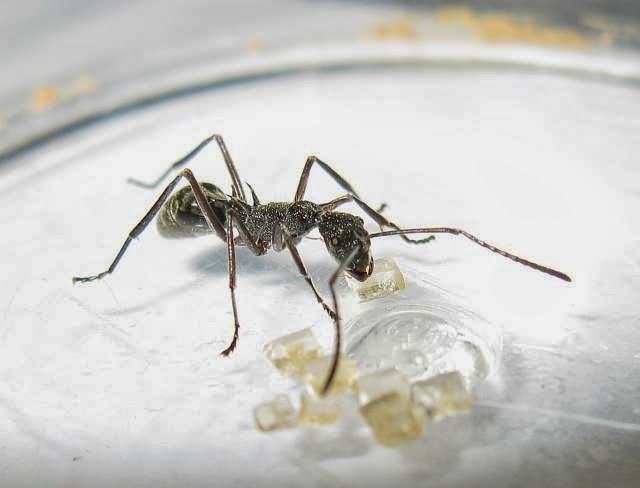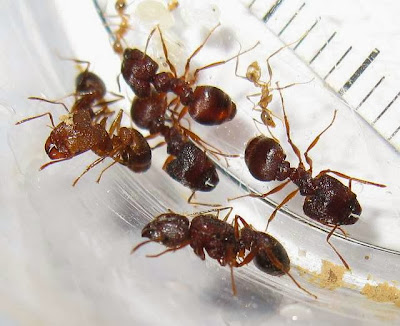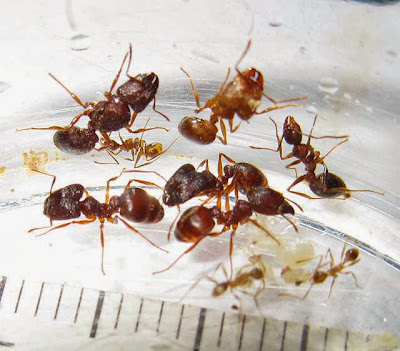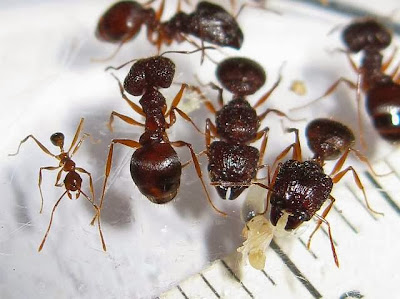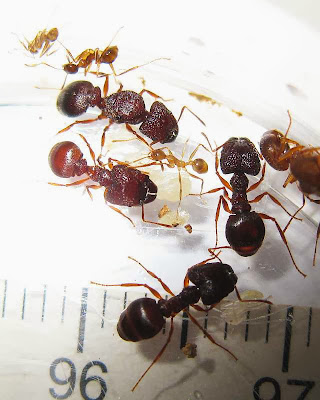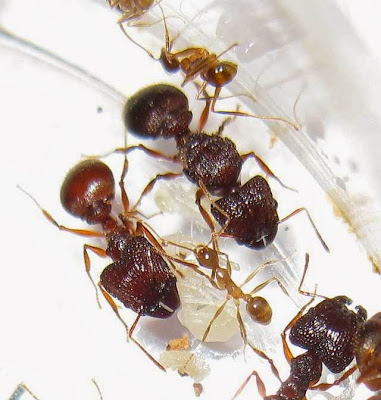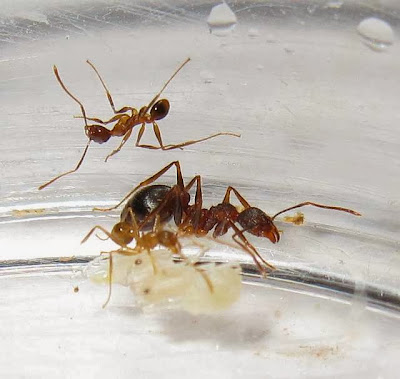Many arthropods such as spiders, praying mantis, beetles and assassin bugs mimic ants. Here is one ant that mimics another, this Polyrhachis species mimics Diacamma ants. From the head to the gaster this Polyrhachis species looks very similar to Diacamma. The main give away are the spines on the thorax.
In ants, mimicry is not restricted to morphological appearance but are very commonly expressed in behavior one of the most common of which is the raised gasters that in smaller species mimics fireants (i.e. Solenopsis and to some extend also Monomorium) and in larger species probably mimicry of Oecophylla smaragdina. This mimicry expression is usually targeting larger predators such as birds, lizards, frogs and even small mammals as obviously arthropods that prey on ants such as centipedes, scorpions, spiders, praying mantis, assassin bugs, etc are not exactly deterred.
This Polyrhachis species like most of this genus is monomorphic and polygynous.
In ants, mimicry is not restricted to morphological appearance but are very commonly expressed in behavior one of the most common of which is the raised gasters that in smaller species mimics fireants (i.e. Solenopsis and to some extend also Monomorium) and in larger species probably mimicry of Oecophylla smaragdina. This mimicry expression is usually targeting larger predators such as birds, lizards, frogs and even small mammals as obviously arthropods that prey on ants such as centipedes, scorpions, spiders, praying mantis, assassin bugs, etc are not exactly deterred.
This Polyrhachis species like most of this genus is monomorphic and polygynous.
Worker of a Polyrhachis esuriens.
Worker of a Polyrhachis esuriens.
Worker of slim Polyrhachis esuriens.
Worker of Polyrhachis esuriens.
Worker of Polyrhachis esuriens.
Worker of Polyrhachis esuriens.
Worker of Polyrhachis esuriens.
Alate of Polyrhachis esuriens.
Alate of Polyrhachis esuriens.
Alate of Polyrhachis esuriens.
Dealate of Polyrhachisesuriens.
Worker of a Polyrhachis esuriens.
Worker of slim Polyrhachis esuriens.
Worker of Polyrhachis esuriens.
Worker of Polyrhachis esuriens.
Worker of Polyrhachis esuriens.
Worker of Polyrhachis esuriens.
Alate of Polyrhachis esuriens.
Alate of Polyrhachis esuriens.
Alate of Polyrhachis esuriens.
Dealate of Polyrhachisesuriens.
De-alated Polyrhachis esuriens queen.
Polyrhachis genus. 84544
Polyrhachis adominalis
Taxonomy:
Top Node: cellular organisms 131567
SuperKingdom: Eukaryota 2759
No Rank: Opisthokonta 33154
Kingdom: Metazoa 33208
No Rank: Eumetazoa 6072
No Rank: Bilateria 33213
No Rank: Coelomata 33316
No Rank: Protostomia 33317
No Rank: Panarthropoda 88770
No Rank: Pancrustacea 197562
Phylum: Arthropoda 6656
No Rank: Mandibulata 197563No Rank: Pancrustacea 197562
Superclass: Hexapoda 6960
Class: Insecta 50557
No Rank: Dicondylia 85512
No Rank: Pterygota 7496
Subclass: Neoptera 33340
Infraclass: Endopterygota 33392
Order: Hymenoptera 7399
No Rank: Apocrita 7400
Suborder: Aculeata 7434
Superfamily: Vespoidea 34725
Family: Formicidae 36668
Subfamily: Formicinae 7479
Tribe: Camponotini 72773
Genus:- Polyrhachis 84544
Last Updated: 2014 04 30
First Posted: 2014 04 29
© 2009 – 2014 Quah. All rights reserved.
